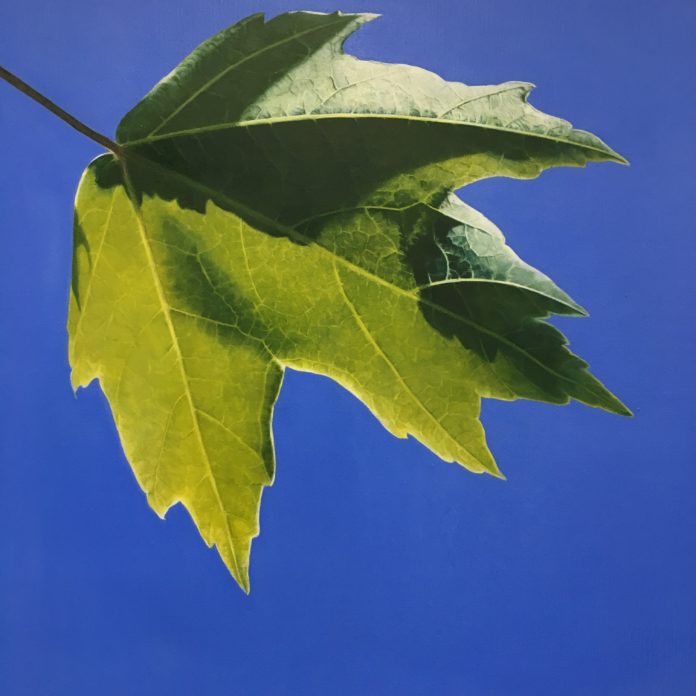On Painting Trees: With 70 million acres of forested land disappearing each year, Carin Wagner is dedicating her life to painting the most endangered trees.
Vulnerable and Vanishing Trees
BY CARIN WAGNER
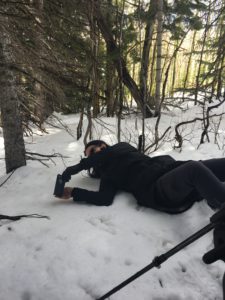
How do you feel about trees? Did you know that they actually create the ecosystem around them?
My enjoyment of trees started in the usual way, wondering at the light filtering through the leaves, listening to their susurration, admiring the diversity of bark patterns. Each tree tells a story about the animals that it feeds, the butterflies and birds that it supports – all of the life it sustains, if we only watch and listen.
My first tree painting was inspired by an Orange Jasmine tree that was alive with dozens of zebra butterflies. The second was a Laurel Oak sapling quiet in the moonlight. Examining leaves in close detail, and the reflections of trees in water, consumed years, all of it leading me into a deeper knowledge of what trees do for all of us.
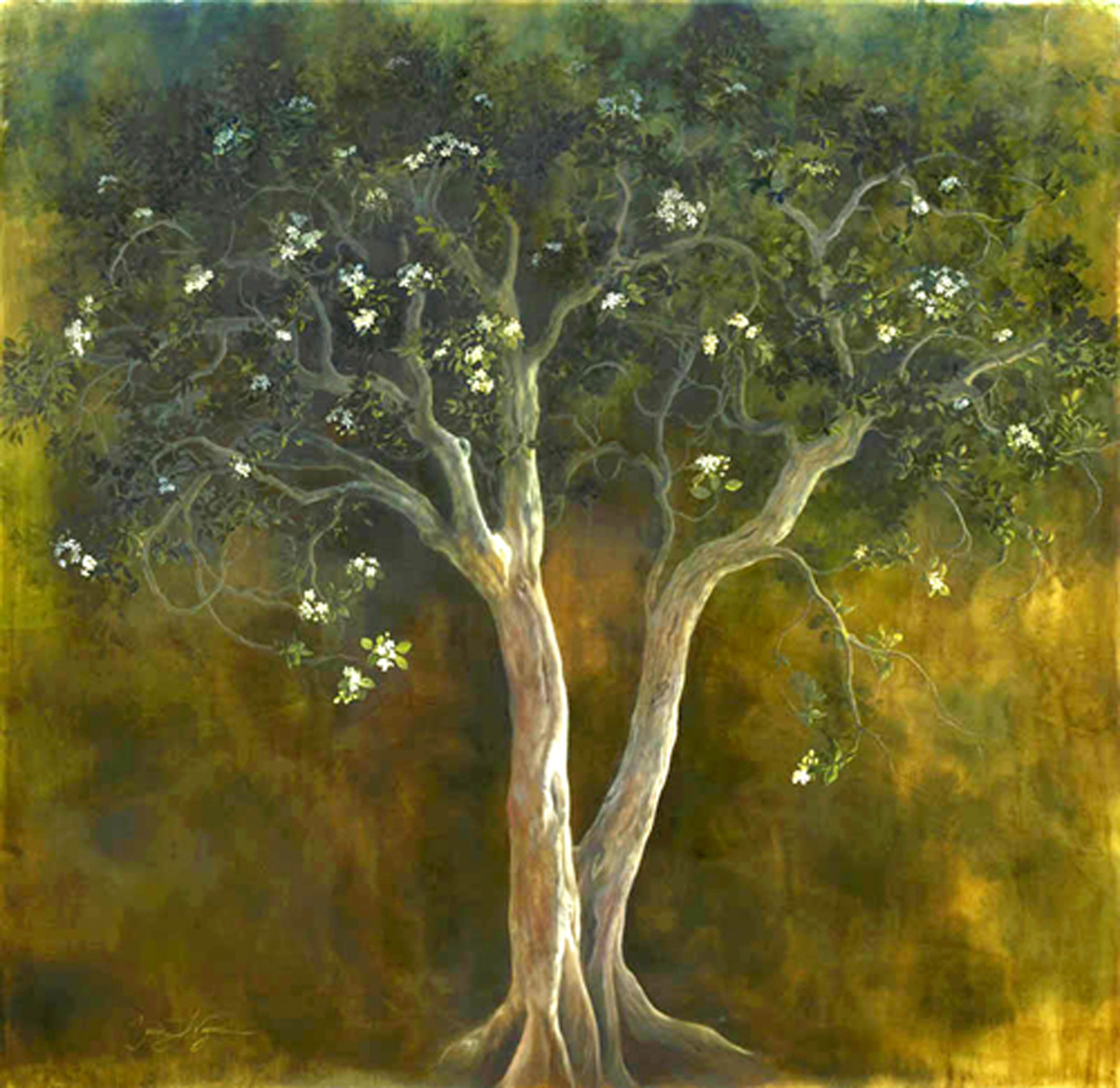
While wandering through a park in Paris, I encountered a Sycamore tree that looked like a woman dancing joyfully with her arms held high. I wondered then if seeing their own shape reflected in a tree would help humans want to protect them. As I was completing this large scale tree portrait, I happened upon “The Overstory” by Richard Powers. It affected me deeply – the love for trees and their munificence reflected in every interaction between people and the trees.
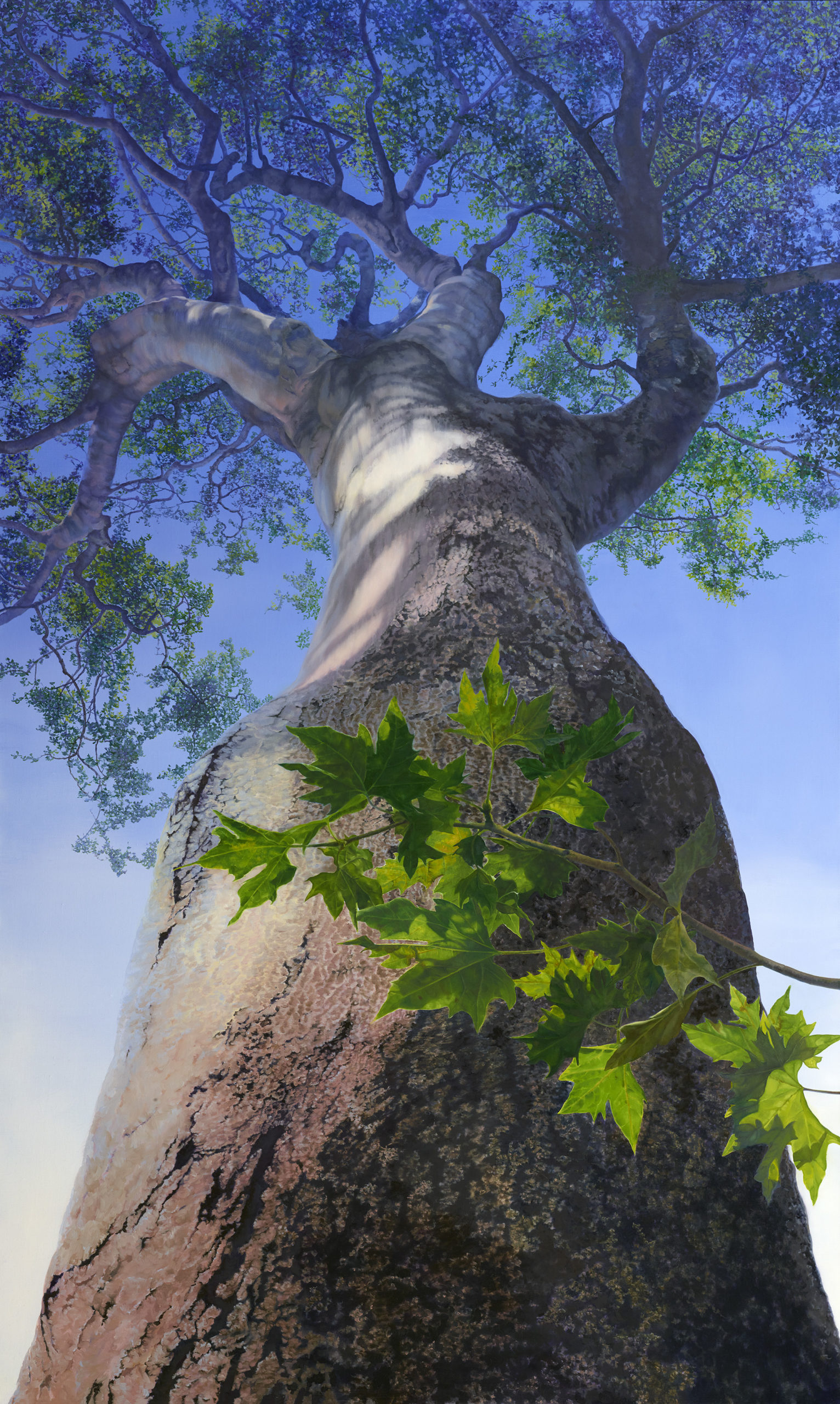
Shortly afterwards I read an article in the Washington Post written by the science writer Gabriel Popkin about the loss of diversity in our forests. He specified ash trees as particularly threatened due to the emerald ash borer, a type of beetle accidentally imported from China. His photo of a Blue Ash reminded me of my “Lady of the Sycamore.” He remarked on the human form of the Ash tree.
My mission became clear: Highlight the individual trees we stand to lose, in a way that engages people and informs them about each tree’s role in the ecosystem.
As I started exploring endangered trees on the internet, it became clear that I would need help from the experts, not only in determining the level of threat that each tree faced, but where to locate each of them. One of the first people that I reached out to was Murphy Westwood from the Morton Arboretum. She directed me to the IUCN red list, which categorizes flora and fauna from all over the world into nine categories, including Not Evaluated, Near Threatened, Vulnerable, Critically Endangered and Extinct.
At the time there were 79 trees listed as Critically Endangered. The title for my project became “Vulnerable and Vanishing Trees.”
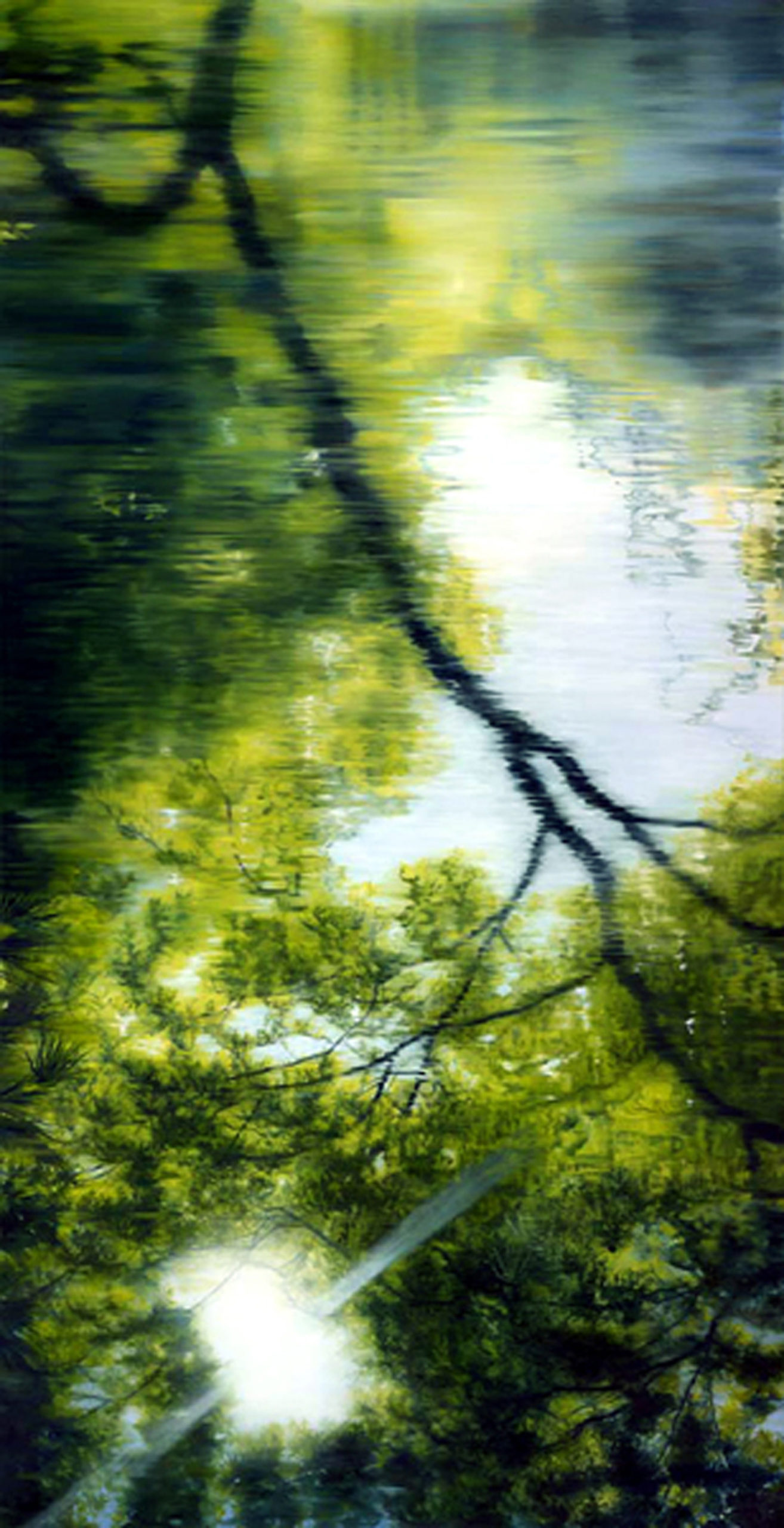
Painting Trees, and Tree Hunting, in Kentucky
Reaching back out to Gabriel Popkin, I asked him if he would direct me to any mature ash trees. Since he was familiar with some beautiful trees in Kentucky, I decided to start there. My sister lives in Louisville, so it made the start of my search easier. Directed by the naturalist Julian Campbell, I travelled to a gorgeous wild place in Kentucky named Griffiths Woods. Gabriel informed me that it was chigger and tick season, and that it would be better to wait until winter. He was right, with the additional challenge of the trees being completely protected with berry vines and brambles, impeding our path to the trees.
Although I couldn’t get a clear photo in two hours of sweaty trekking through the undergrowth, we did see fields full of wildflowers and bumbling bees. Leaving without accomplishing my objective was disheartening, but on my sister’s recommendation we decided to drive to Bernheim Forest.
After a few hours wandering leafy green paths, I found a huge white ash tree right next to the education center. The next day, while accompanying my sister on her daily dog walk through Seneca Park, I encountered a number of beautiful ash trees, one of which had a gorgeous form and outstretched limbs. I had found the perfect subject for my first endangered tree painting.
The Green Ash tree painting took almost six months to complete. At 80” x 46”, painting the intricate bark and leaves required considerable patience, exploring different ways to represent masses of leaves but ending with most leaves requiring individual brush strokes. Finding my way in the bark patterns was a challenge.
I sketched the tree on the canvas until I was satisfied with the composition, continued with loose directional paint strokes, and then started the laborious process of layering in detail. Every day I would get lost in the details until I finally started sectioning portions on my photo with post it notes in order to keep my eyes on the correct section.
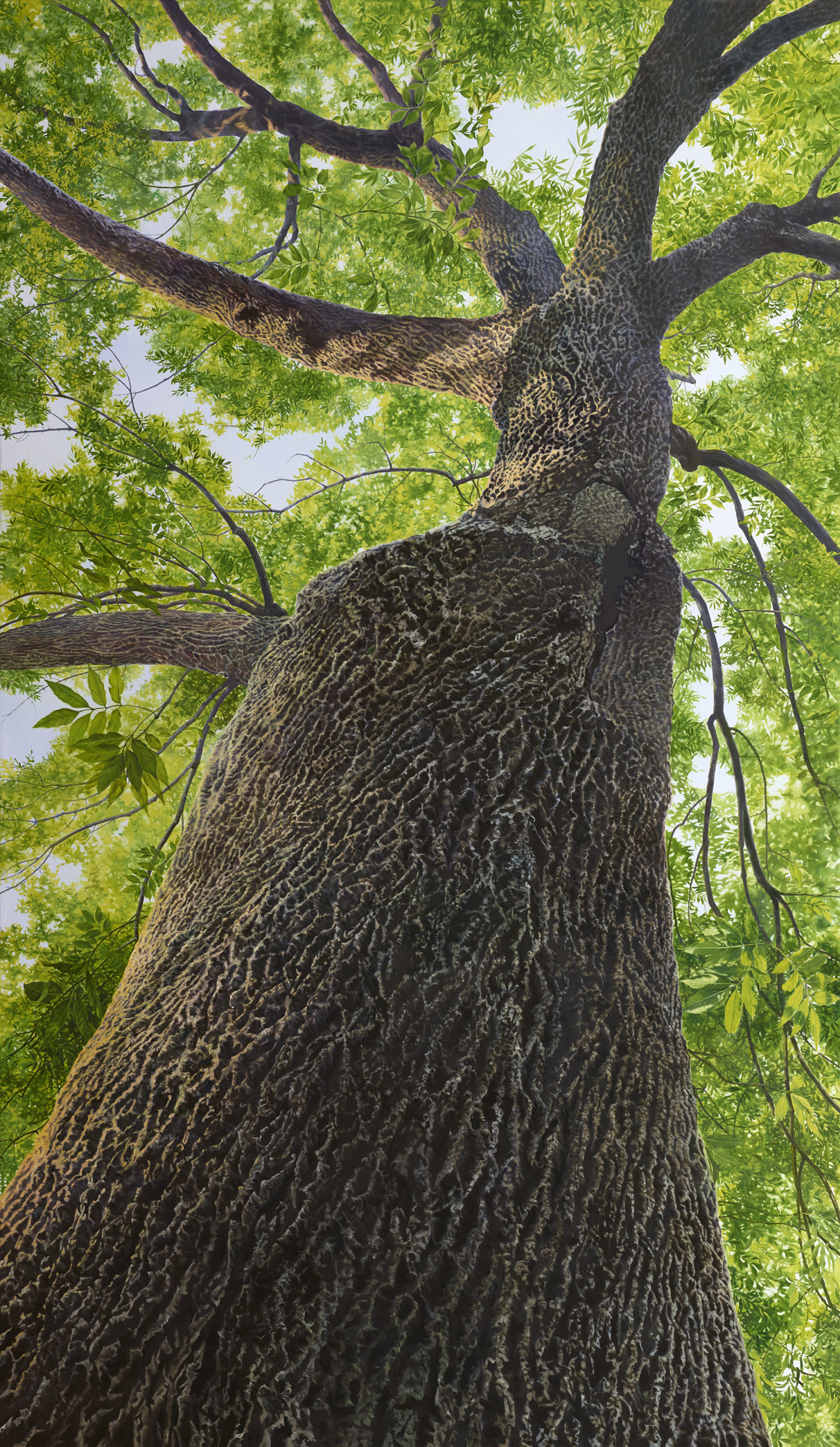
The next tree to be painted was the Virginia roundleaf birch, which was a challenge to locate. The Virginia roundleaf birch, or Betula uber, was the first tree to be protected by the Endangered Species Act. A botanist encountered it for the first time in 1918. For 60 years after it was identified no one could locate the tree, and it was presumed to be extinct. In 1975 it was rediscovered by a naturalist about a mile away from the original site. It is now believed that the original botanist erred in his identification of the location.
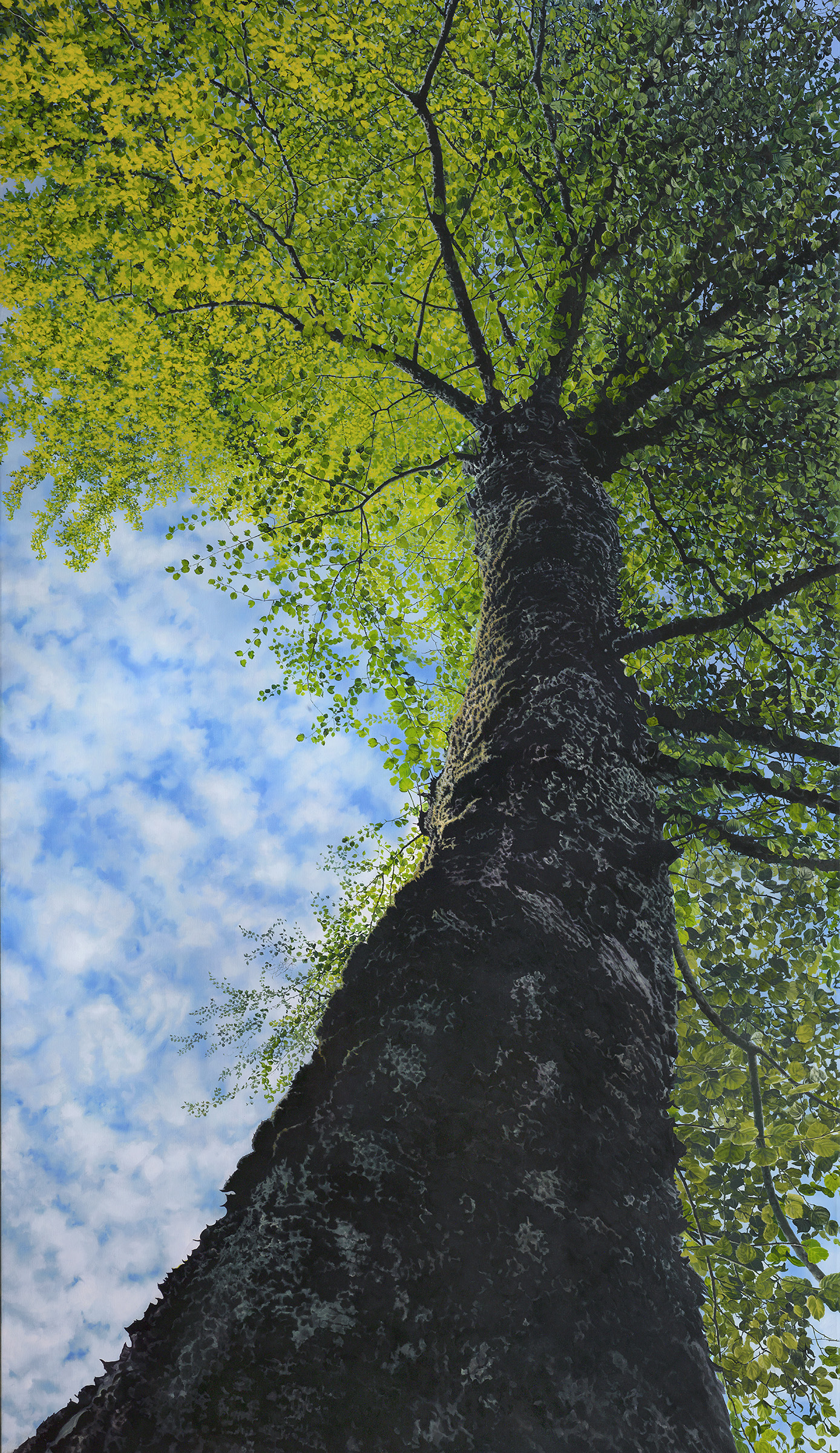
As I learn about each new endangered tree, there is the sense of discovering something beautiful just a little too late. Seventy million acres of forested land disappear every year. I have encountered so many wonderful people in the course of this project to date, and given the limited space, I can’t individually name and thank all of them, but they are all working hard to protect the trees.
My current painting in progress is a gorgeous Blue Ash that is located on Henry Clay’s Estate in Kentucky. Following that, I have an extremely rare surviving American Chestnut to paint. I am privileged to spend the rest of my life on this project. The exhibition, featuring my paintings of trees that are rare and endangered, will travel starting in November of 2021 at the Cornell Museum in Delray Beach, continuing on to communities that are affected by the loss of these incredible gifts of nature.
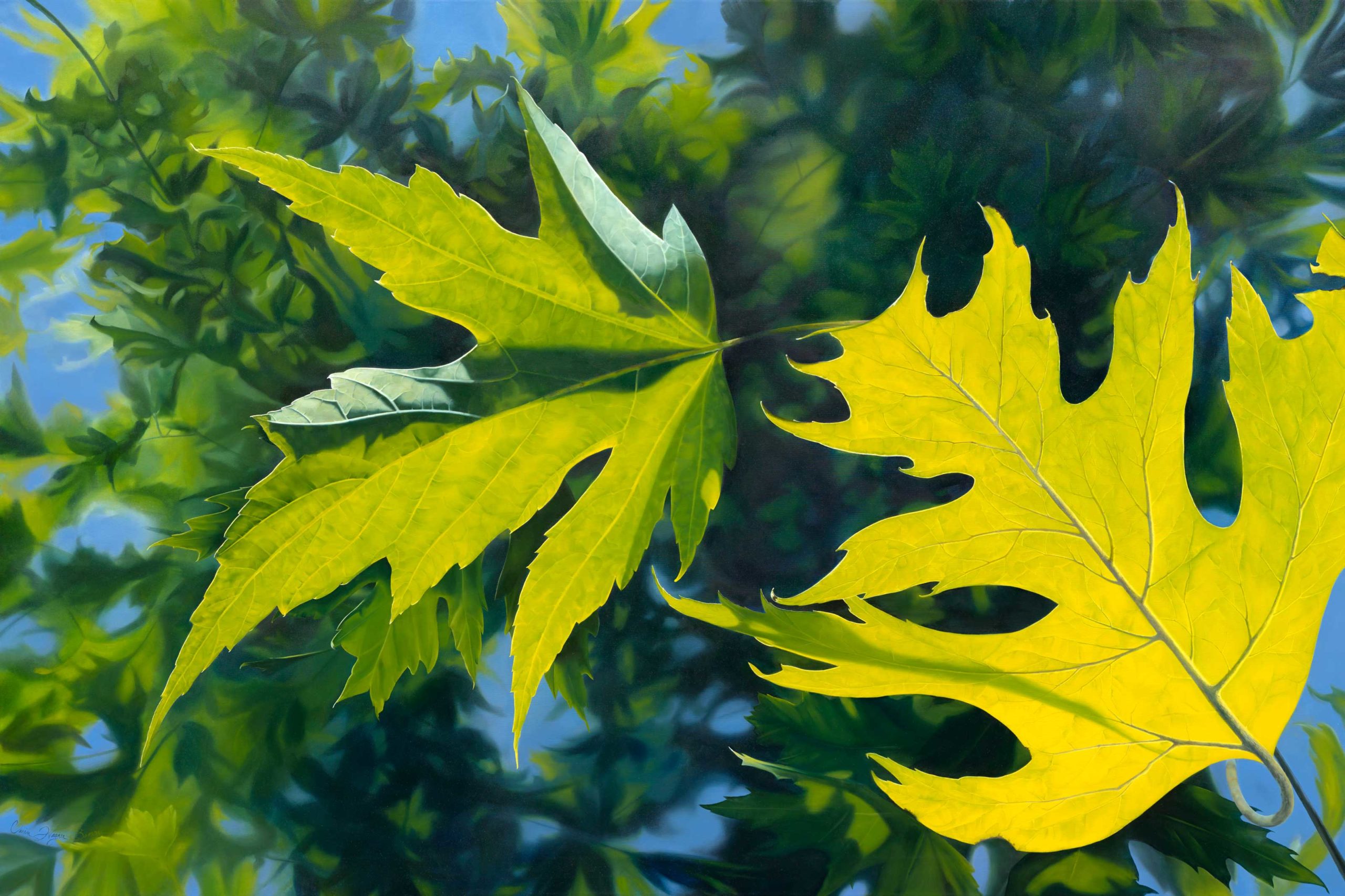
Thank you for taking time to read about this project. If you are interested in reading about my efforts to photograph this tree and the others that I have already documented that await their turn on my easel, my blog Vulnerable and Vanishing Trees will take you on the journey with me.


